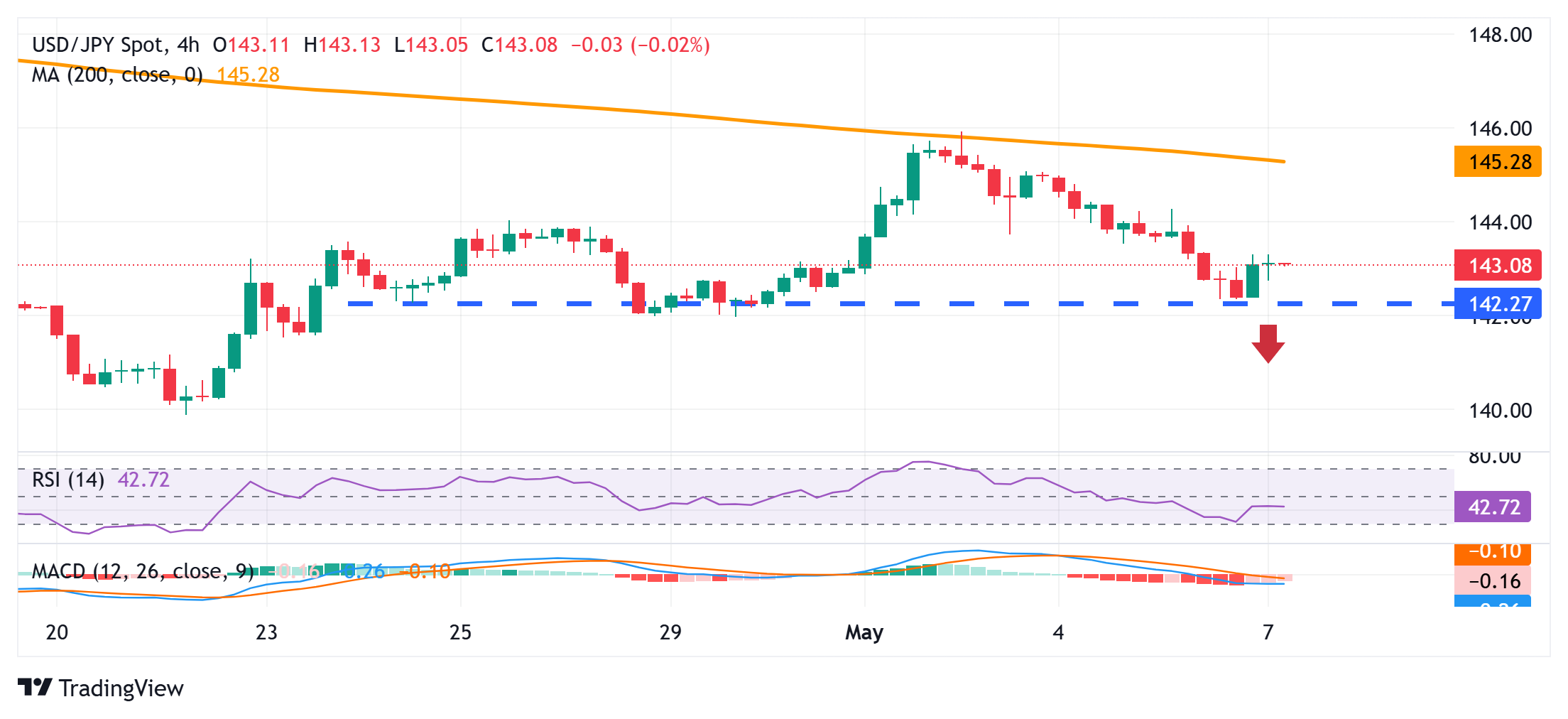Japanese Yen drifts lower as investors cheer US-China trade talks
- The Japanese Yen snapped a three-day winning streak against the USD on Wednesday.
- The US-China trade talks optimism is seen weighing heavily on the safe-haven JPY.
- A modest USD uptick further supports USD/JPY ahead of the FOMC policy decision.
The Japanese Yen (JPY) weakens across the board during the Asian session on Wednesday as the optimism over the US-China trade talks is seen undermining demand for traditional safe-haven assets. This comes on top of the uncertainty over the likely pace and timing of future rate hikes by the Bank of Japan (JPY), which is seen weighing on the JPY. This, along with a modest US Dollar (USD) uptick, assists the USD/JPY pair to gain some positive traction and snap a three-day losing streak to a nearly one-week low touched on Tuesday.
Investors, however, seem convinced that the BoJ may raise its outlook, depending on the outcome of the US-Japan trade talks, and hike interest rates again amid signs of the broadening inflation in Japan, which could act as a tailwind for the JPY, Moreover, the USD bulls might refrain from placing aggressive bets and opt to wait for more cues about the Federal Reserve's (Fed) rate-cut path. This, in turn, could cap any meaningful upside for the USD/JPY pair as traders keenly await the outcome of a FOMC policy meeting later today.
Japanese Yen is undermined by receding safe-haven demand amid hopes for a US-China trade deal
- US Treasury Secretary Scott Bessent, along with US Trade Representative Jamieson Greer, will travel to Switzerland later this week for trade talks with Chinese Vice Premier He Lifeng. This comes after Bessent on Tuesday said the Trump administration could announce trade deals with some of the largest trade partners as early as this week and boost investors' confidence.
- This, in turn, is seen undermining demand for traditional safe-haven assets and exerting pressure on the Japanese Yen during the Asian session on Wednesday. The US Dollar, on the other hand, edges higher following a three-day losing streak amid some repositioning trade ahead of the crucial FOMC decision and lifts the USD/JPY pair back above the 143.00 mark.
- The Federal Reserve is expected to leave interest rates unchanged at the end of a two-day policy meeting. Hence, the market focus will be on the accompanying policy statement. Apart from this, Fed Chair Jerome Powell's comments at the post-meeting press conference will be scrutinized for cues about the future rate-cut path, which will drive the USD in the near term.
- Meanwhile, the Bank of Japan reiterated last week that it remains committed to raising rates further if the economy and prices move in line with its forecasts. Moreover, expectations that sustained wage hikes will boost consumer spending and inflation in Japan keep the door open for further policy normalization by the BoJ and interest rate hikes by the end of this year.
- Meanwhile, a Kremlin spokesman warned that an appropriate response will be given immediately if Ukraine does not halt the fire. Adding to this, Israel's security Cabinet unanimously approved a plan to widen the military offensive in Gaza and gradually seize control of the territory. This keeps geopolitical risks in play and should limit deeper JPY losses.
USD/JPY might confront stiff barrier near the 143.55-143.60 area and remain below the 144.00 mark

From a technical perspective, last week's failure near the 200-period Simple Moving Average (SMA) on the 4-hour chart and the subsequent downfall favor bearish traders. Moreover, oscillators on daily/hourly charts are holding in negative territory, suggesting that the path of least resistance for the USD/JPY pair remains to the downside. Hence, any further move up might still be seen as a selling opportunity near the 143.55-143.60 region. This, in turn, should cap spot prices near the 144.00 mark. This is followed by the 144.25-144.30 supply zone, which, if cleared decisively, might trigger a short-covering rally and lift spot prices to the 145.00 psychological mark.
On the flip side, the 142.35 area, or the weekly low, now seems to protect the immediate downside for the USD/JPY pair ahead of the 142.00 mark. A convincing break below the latter could make spot prices vulnerable to accelerate the fall further towards the next relevant support near the 141.60-141.55 region en route to the 141.00 round figure.
US-China Trade War FAQs
Generally speaking, a trade war is an economic conflict between two or more countries due to extreme protectionism on one end. It implies the creation of trade barriers, such as tariffs, which result in counter-barriers, escalating import costs, and hence the cost of living.
An economic conflict between the United States (US) and China began early in 2018, when President Donald Trump set trade barriers on China, claiming unfair commercial practices and intellectual property theft from the Asian giant. China took retaliatory action, imposing tariffs on multiple US goods, such as automobiles and soybeans. Tensions escalated until the two countries signed the US-China Phase One trade deal in January 2020. The agreement required structural reforms and other changes to China’s economic and trade regime and pretended to restore stability and trust between the two nations. However, the Coronavirus pandemic took the focus out of the conflict. Yet, it is worth mentioning that President Joe Biden, who took office after Trump, kept tariffs in place and even added some additional levies.
The return of Donald Trump to the White House as the 47th US President has sparked a fresh wave of tensions between the two countries. During the 2024 election campaign, Trump pledged to impose 60% tariffs on China once he returned to office, which he did on January 20, 2025. With Trump back, the US-China trade war is meant to resume where it was left, with tit-for-tat policies affecting the global economic landscape amid disruptions in global supply chains, resulting in a reduction in spending, particularly investment, and directly feeding into the Consumer Price Index inflation.
